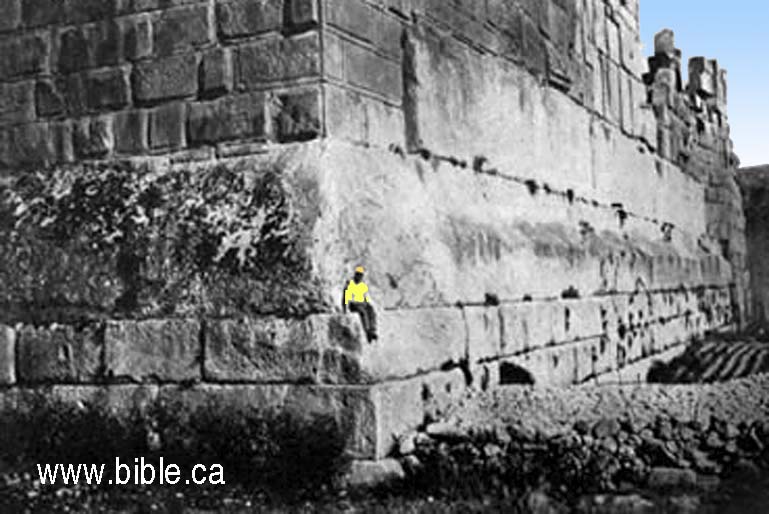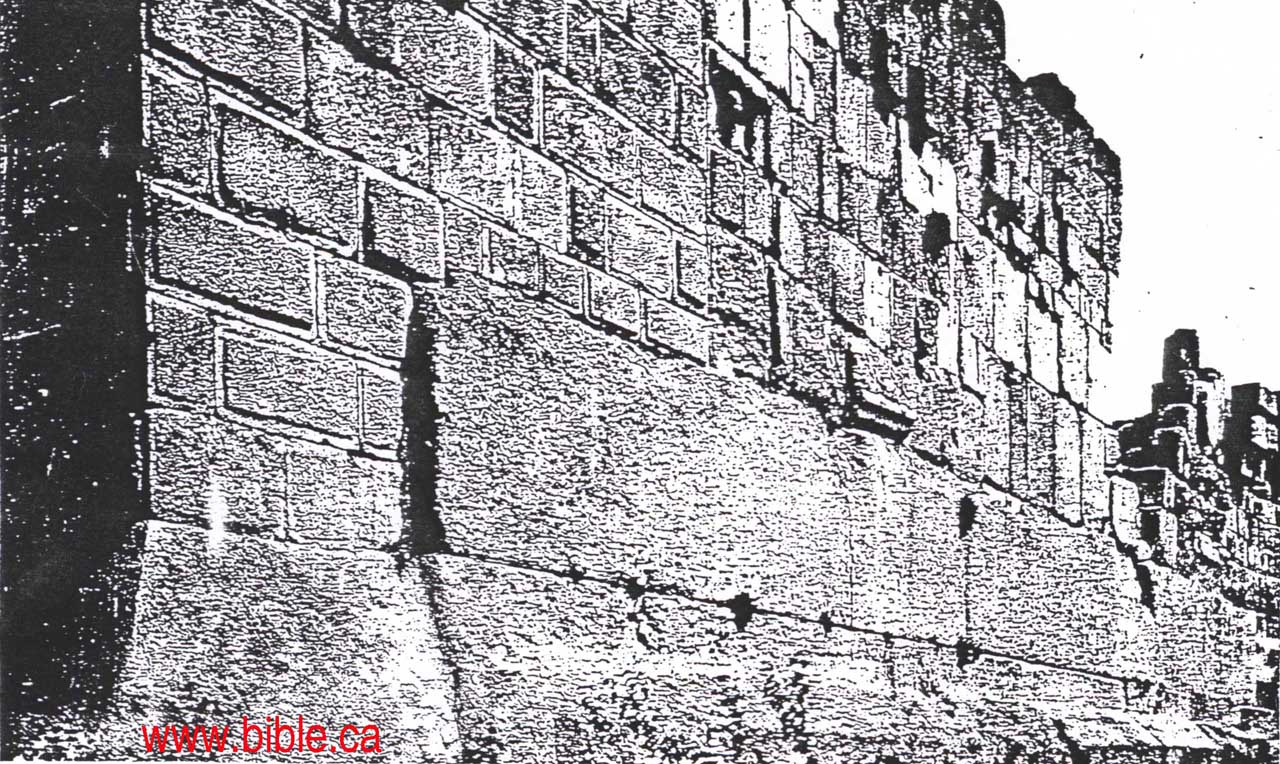(Link to detailed view of the Temple of Jupiter in Baalbek )
Click on photo for high resolution


The temple mount walls are more likely "Hadrian" then "Herodian":


|
Building |
Builder |
Embossed "pillow cut" stones |
Size of stones compared to Temple mount walls |
Size of building |
notes |
|
Temple Mount |
Herod or Hadrian? |
Yes |
- |
Josephus: 60 dunams |
|
|
Temple Mount |
Herod or Hadrian? |
Yes |
- |
Today: 150 dunams |
|
|
Augustus, Titus & Hadrian |
Yes, some |
similar size |
52 dunams |
|
|
|
Ostia Temple Area |
Hadrian |
no |
smaller clay bricks |
15 dunams |
|
|
Hadrian |
|
|
7 dunams |
|
|
|
Hadrian |
no |
smaller |
|
Hadrian set up a gold and ivory inlaid statue of the Zeus inside the temple. Next to it he placed a huge statue of himself. Both these statues have since been lost. |
|
|
Rebuilt from scratch by Hadrian after fire. |
|
|
|
|
|
|
Hadrian |
No |
|
|
On one side, an inscription reads "This is Athens, the ancient city of Theseus." The other side reads: "This is the city of Hadrian and not of Theseus." |
|
|
Hadrian |
No |
|
|
Hadrian's Arch, was built at the entrance to the town to celebrate his arrival. |
|
|
Hadrian |
no |
small clay bricks |
very large complex |
|
|
|
Hadrian |
no |
smaller stones |
|
80 mile long wall bordering England and Scotland |
By Steve Rudd: Contact the author for comments, input or corrections.